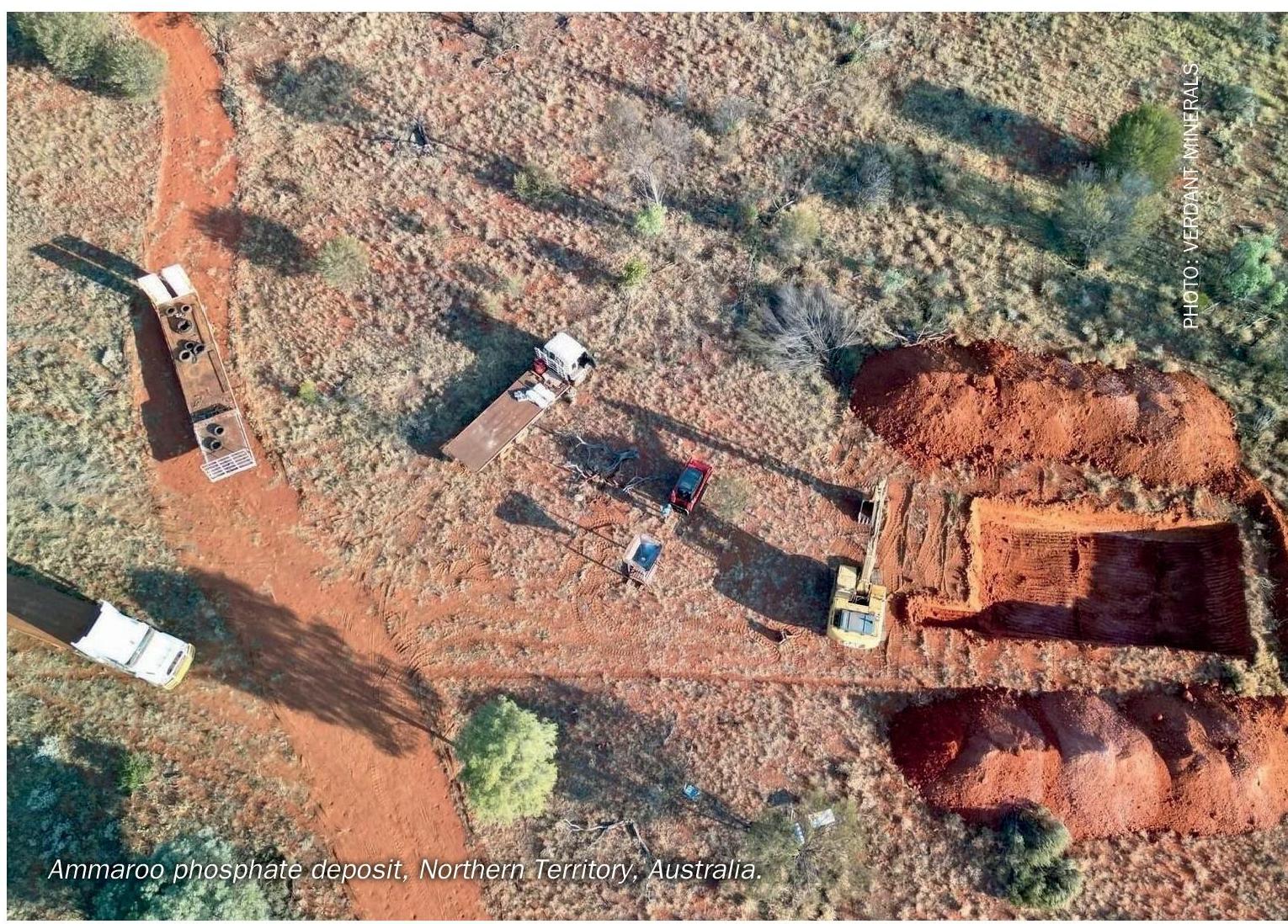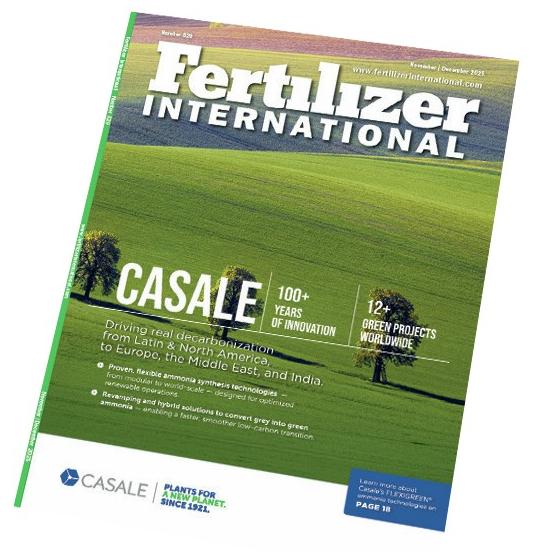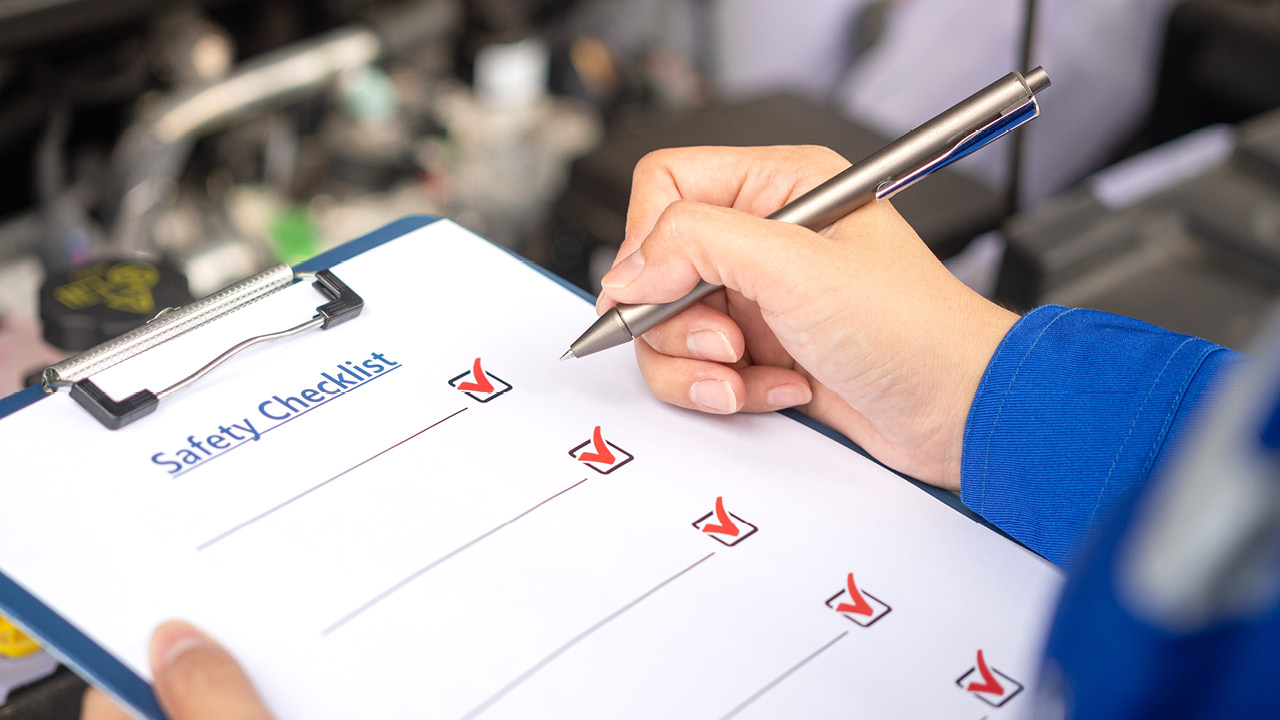Fertilizer International 516 Sept-Oct 2023

30 September 2023
Container transport and bulk shipping – the best of both worlds!
TRANSPORT AND SHIP LOADING
Container transport and bulk shipping – the best of both worlds!
Intermodal Solutions Group (ISG) is introducing a container-based storage, transport and ship loading system for bulk fertilizers. The company’s innovative Pit to Ship Solutions™ system could transform fertilizer logistics and help the sector meet its environmental, social and corporate governance (ESG) goals.
For more than a decade, the environmentally-friendly storage, transport and ship loading system from Intermodal Solutions Group (ISG) has set a new benchmark in mining industry logistics via container ports. For the first time, the company’s innovative Pit to Ship Solutions™ system can now be used for fertilizer logistics too.
Containerisation is not a new idea. It has, in fact, been around for over thirty years. But the use of customised containers, firstly for fertilizer storage, then for road/rail transport, and finally fertilizer ship loading, is a completely new concept – well, for the fertilizer industry at least!
The copper mining sector, in contrast, has been doing this for over fifteen years now. Recently, though, the same approach has been adopted by several urea suppliers and taken to new levels.
Container transport by rail or road
Fertilizer is loaded into ISG’s custom-built containers using conventional loading chutes or front-end loaders. These containers, each of which can hold about 30 tonnes of fertilizer, are specifically designed without doors. Instead, their lids come off, or their roof hatches are opened, depending on the preferred product loading procedure.





The containers are immediately sealed after loading at the production or blending plant. This keeps the granular fertilizer product moisture-free and prevents the entry of any undesirable contaminants that can occur around storage areas. Conveniently, the containers are also stackable.
Once loaded, the containers are easily transported by rail or road to the loading port. This is typically a container port for international export or a river port for inland distribution.
Bulk loading at the port
Crucially, ISG’s Pit to Ship Solutions™ system avoids the use of storage sheds and double handling at the port. Instead, the fertilizer remains safely and securely stored within its robust sealed container until the ship arrives.
Once the ship has docked, bulk loading can proceed via a special tippler and lid lifting device. Only at this stage is the lid of the container finally taken off – for the very first time since loading – while the tippler places the container into the ship’s hold. The tippler then tips the fertilizer into the hold, quickly, smoothly and efficiently, by rotating the container full circle through 360 degrees.
The lid is then replaced, the containers go back to the plant to be refilled with fertilizer, and the whole storage, transport and ship loading process starts over once again.
Unique advantages
The best thing about this innovative fertilizer logistics system is that the ship loading takes place in a container port not a bulk port. Indeed, the only thing the container port needs to purchase is the tippler. Everything else the system needs is already provided by container port authorities. Importantly, the existing port infrastructure can handle the custom-built containers as their footprint is identical to a standard 20-foot-long container.
ISG’s system has already been used successfully to transport urea 900 kilometres from Bulo Bulo in the Bolivian jungle to Quijarro, a river port on the Tamengo Canal close to the country’s border with Brazil.
Overall, Pit to Ship Solutions™ from ISG offers the fertilizer industry clean logistics to help the sector on its ESG journey!






